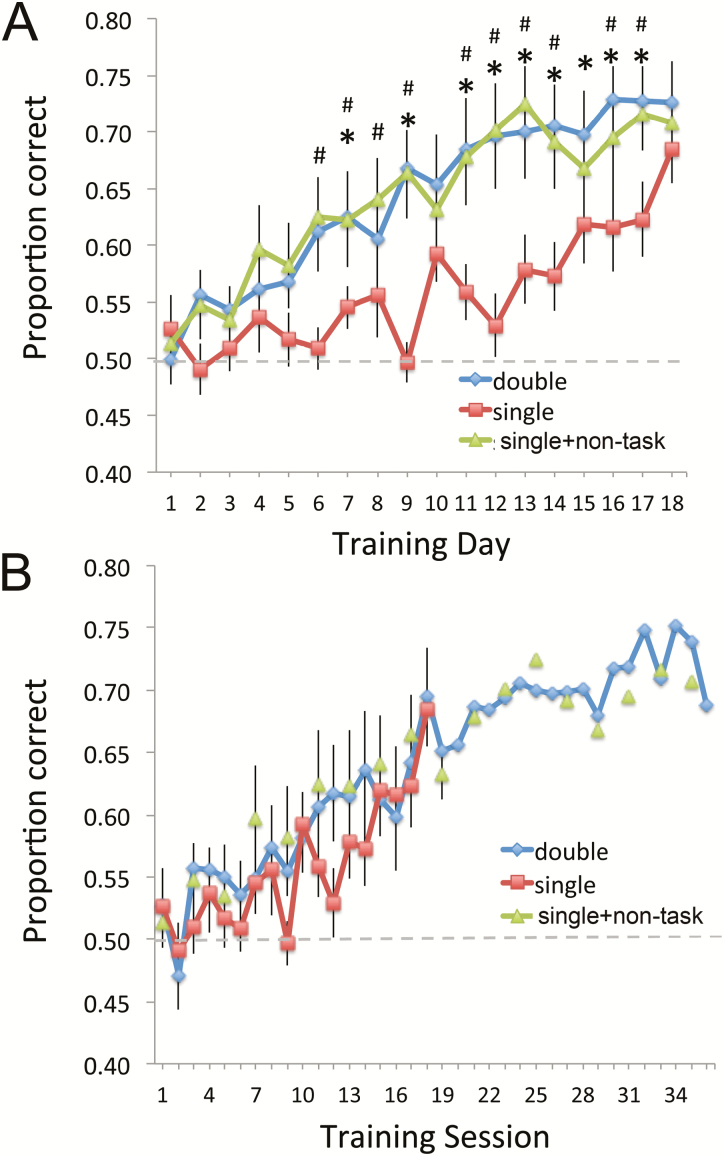Figure 3.
(A) Mean behavioral performance (±standard error of the mean) in the odor-discrimination task over days of training in 3 groups in Experiment 1. Mice trained with 2 active-training sessions per day (diamonds) or with 1 active-training session combined with non-task-related exposure to those same odorants in the home cage (triangles) learned significantly faster than mice trained with 1 active-training session per day (squares). Asterisks signify significant differences between double active-training sessions per day compared with single active-training sessions per day; #s signify significant differences between single active training plus non-task-related exposure compared with single active training alone. (B) The same data plotted by individual session, rather than by day. Mice in the single active-training session plus non-task-related exposure showed the same magnitude of improvement from session to session as the animals receiving 2 active-training sessions per day. The animals trained with 1 active-training session per day also improved at the same rate per session, though had fewer sessions. This figure is reproduced in color in the online version of the issue.

